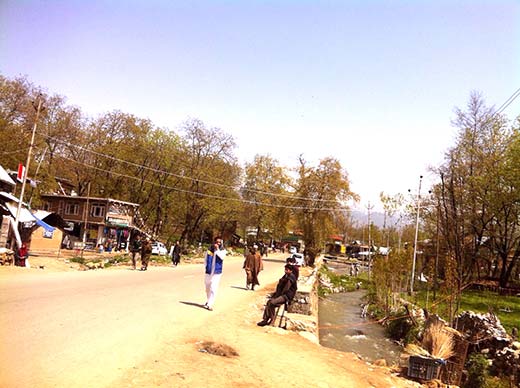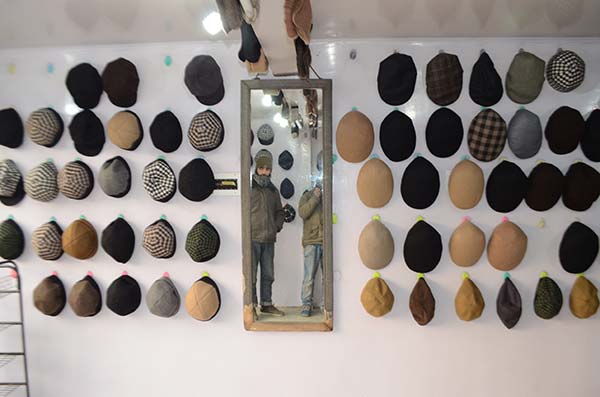With government busy in trading rhetoric a village in South Kashmir is forced to choose between death and slow death. Suhail A Shah reports how victims of Hepatitis-C are fighting the disease with everything they have

Choosing between loved ones can be a daunting task but it can be an ordeal, beyond any body’s capabilities to handle, if one has to pick which one of his family members he wants to save and which ones to let die!
The people in Sagam village, in Kokernag area of south Kashmir’s Islamabad district, are living in one such ‘ordeal’.
A Hepatitis-C outbreak has engulfed the village, like many other villages in the vicinity, and the treatment is leaving them landless and penniless.
Clear blue skies, fresh air, greenery and the sound of gushing waters gives Sagam village, of Kokernag in Islamabad district, the countenance of yet another chunk of the mesmerising beauty Kashmir is.
The residents however, in stark contrast to their surroundings, remain restive for they are dying, slowly and their loved ones as well.
Predominantly an agricultural society, land in the area is often the only source of income and they in the face of the outbreak now are often forced to sell whatever little land they have.
With such meagre resources, and multiple cases of infected family members, the villagers find themselves at the cross roads.
They have, more often than naught, to make a decision to choose which one of their family members are they going to get treated.
Kashmir Life in February 2013 had reported a mass outbreak of Hepatitis-C in twin villages of Takia-Magam and Sonabrarie villages of Kokernag area, where over 500 souls had already been tested positive and more than 15 have succumbed so far to the deadly virus.
Dr Sultan Muhammad Khuroo, an eminent gastroenterologist of the valley who was appointed by the state government to file a report on Hepatitis-C outbreak had termed the outbreak more dangerous than anywhere in the world including Egypt, where nearly 15 per cent of the population is Hepatitis-C positive.
After the initial stir outbreak of the ‘virus’ managed to create it was forgotten altogether by the people and more importantly by the government.
Ironically, the government has been in constant denial, downplaying the whole issue.
Two years down the line the virus has engulfed many other villages in the area like Sagam, where more than a hundred people have already been tested positive for the virus.
With government in denial and no screening done in the areas to ascertain the exact number of patients, people in Sagam took to private diagnostic centres and their worst fears came true.
No support from the government or any other source for that matter the villagers, who are predominantly farmers, are selling their land to live.
But that too does not suffice as the treatment costs a whopping 2.5 to 3 Lac rupees.
Moreover the commute to and fro SK Institute of Medical Sciences in Srinagar, given the treatment is only available there, is also costing a fortune.
Adding to the miseries of the villagers is the fact that multiple cases are being diagnosed within families, which is taking a toll on the affected people emotionally as well.
So far 8 people have already succumbed to the virus in Sagam village.
In face of such calamity, prioritising lives, deciding which family member to save and which to let die is a decision no human can make. But the gallant villagers are making their choices, for they do not have any choices left.
Often having a handful of money at their disposal, the families have to take a tough call on who to get treated first.
Like 40-year-old Muhammad Amin Rather who was one of the first people to test positive for the virus in Sagam.
“As I was thinking to borrow money from friends or relatives and get myself treated my wife tested positive for the virus,” Rather, a tall man with a well kept beard, says putting up a stoic face to hide any emotions whatsoever.
Rather took the call, sold all his land and started to get his 37-year-old wife treated.

Ever since, Rather says, things have been a nightmare with weekly commute to SKIMS in Srinagar and the after effects his wife has of the medicines injected.
The injections in open market are sold at Rs 14,665 and the SKIMS authorities were told to provide the injections at almost half the rate, Rs 7500.
But the people of Sagam had to even fight for the subsidised injections as well. Initially they were told that the injections will cost them the print price of Rs 14,665.
“We had to fight for subsidised injections at SKIMS and ultimately they gave in to our demands,” Rather says.
Rather ever since has been on the forefront of the struggle to give his people a right to live, visiting countless offices on a daily basis and accompanying every new patient to SKIMS so that they do not face any indifference at valley’s premier Medical institute.
The treatment consists of at least 24 injections and more, keeping in view the severity of the infection, which puts the cost of the treatment at a minimum of Rs 1,80,000.
Rather’s wife is recovering slowly after the prolonged treatment but now he has to get treated himself.
With his land already sold Rather does not have the money to get himself treated, “Let’s see what destiny has in store for the rest of us.”
Some people, tested positive, might not be lucky enough to recover because of the prolonged, unattended infection.
Sixty-three-year old Abdul Gani Ganaie stopped responding to his treatment after only 12 injections and has been in a coma like position ever since.
Ganaie as of now lies in a bed at his house and half-a-dozen relatives mourn around him.
“He has not talked since a month now and has stopped eating altogether,” the relatives inform.
Ganaie and his wife, after marrying off their 3 daughters, were living a solitary life with their only source of income, farming. His wife, Zareefa, stares at a dark future God forbid anything happens to her husband.
Forty-five-year old Ghulam Nabi Bhat, a farmer, is the sole bread winner of his family and has already spent Rs 2 lakh on his treatment.
That was not the end of the nightmare however. His 32-year-old brother, Farooq Ahmad Bhat, died of the virus and his son Gulzar Ahmad Bhat, is bed ridden even after the family has spent around Rs 8 lakh to get him treated.
“We are in absolute pain. It’s like the doomsday, where every man is for himself and its killing us every minute,” says Bhat.
Then there are many other affected people who do not come out in open for the stigma attached to the ailment.
A renowned physician from the area, requesting anonymity, said the virus is not limited to these two or three villages.
“It has affected hundreds of people from Waedwan, a village in upper reaches of Kokernag, downwards. And the pity is that the government is in denial,” the physician said, adding that there have not even been attempts to find the origin of the disease by the government.
“Any sensitive human being can feel for the poor villagers but the government and health authorities do not give a damn,” medico said.
The psychological implications of the outbreak and people’s battle to stay alive are equally threatening.
A psychiatrist from the area, says that the ‘hardships’ in the backdrop of the outbreak can be menacing as far as mental health of the villagers is concerned.
“There are people who, otherwise, have a hand-to-mouth situation and there are some who have to dole out all their hard earned money for treatment. This for sure is going to have serious implications on mental health of the people,” said the psychiatrist.
As the government remains in denial of this serious threat, it’s silently spreading killing people.
The Virus:
The World Health Organisation (WHO) says 2 percent of the population world over is Hepatitis-C positive and the highest number of cases has so far been registered in Egypt.
“About 150 million people are chronically infected with Hepatitis-C virus, and more than 350 000 people die every year from Hepatitis-C related liver diseases,” reads the media section of the WHO website.
The sad part is that there are no vaccines available for the prevention of this particular infection, even though billions of dollars are spent annually on conducting researches globally to develop one.
However, the risk of getting infected can be considerably reduced by avoiding unnecessary and unsafe injections, unsafe blood products, unsafe sharps waste collection and disposal, use of illicit drugs and sharing of injection equipment, unprotected sex with hepatitis-C infected people, sharing of sharp personal items that may be contaminated with infected blood, tattoos, piercings and acupuncture performed with contaminated equipment.
But if Dr Khuroo is to be believed the outbreak in South Kashmir, “can be the most menacing one ever” with more than 60 percent of the population in Magam and adjoining villages already infected.
Khuroo had, in 2013, told Kashmir Life that the chances of people getting secondary infections in Kashmir are way higher than in any other place.
“Re-use of needles at health centres and chemists’ is the biggest reason for the virus to get transmitted,” said Khuroo.
Director Health Services, Dr Saleem-ur-Rehman, back then had told Kashmir Life that the department is going for mass screening in the area and the State government will device a treatment programme soon after the screening is over. Neither has been done however.
Rehman could not be reached for a comment on the issue today.















